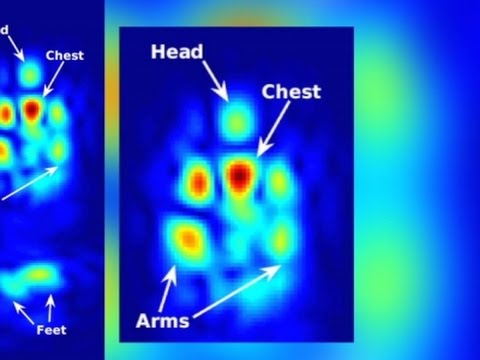
Breaking News
DRINK 1 CUP Before Bed for a Smaller Waist
 Nano-magnets may defeat bone cancer and help you heal
Nano-magnets may defeat bone cancer and help you heal
 Dan Bongino Officially Leaves FBI After One-Year Tenure, Says Time at the Bureau Was...
Dan Bongino Officially Leaves FBI After One-Year Tenure, Says Time at the Bureau Was...
 WATCH: Maduro Speaks as He's Perp Walked Through DEA Headquarters in New York
WATCH: Maduro Speaks as He's Perp Walked Through DEA Headquarters in New York
Top Tech News
 Laser weapons go mobile on US Army small vehicles
Laser weapons go mobile on US Army small vehicles
 EngineAI T800: Born to Disrupt! #EngineAI #robotics #newtechnology #newproduct
EngineAI T800: Born to Disrupt! #EngineAI #robotics #newtechnology #newproduct
 This Silicon Anode Breakthrough Could Mark A Turning Point For EV Batteries [Update]
This Silicon Anode Breakthrough Could Mark A Turning Point For EV Batteries [Update]
 Travel gadget promises to dry and iron your clothes – totally hands-free
Travel gadget promises to dry and iron your clothes – totally hands-free
 Perfect Aircrete, Kitchen Ingredients.
Perfect Aircrete, Kitchen Ingredients.
 Futuristic pixel-raising display lets you feel what's onscreen
Futuristic pixel-raising display lets you feel what's onscreen
 Cutting-Edge Facility Generates Pure Water and Hydrogen Fuel from Seawater for Mere Pennies
Cutting-Edge Facility Generates Pure Water and Hydrogen Fuel from Seawater for Mere Pennies
 This tiny dev board is packed with features for ambitious makers
This tiny dev board is packed with features for ambitious makers
 Scientists Discover Gel to Regrow Tooth Enamel
Scientists Discover Gel to Regrow Tooth Enamel
 Vitamin C and Dandelion Root Killing Cancer Cells -- as Former CDC Director Calls for COVID-19...
Vitamin C and Dandelion Root Killing Cancer Cells -- as Former CDC Director Calls for COVID-19...
Your WiFi Can See You

They found hot pockets in the house, which were used to obtain a search warrant and subsequently bust Kyllo.
Fortunately, a 5-4 Supreme Court decision ruled the scan an unlawful search under the Fourth Amendment, requiring a warrant the police did not obtain. Score one for privacy, but the government is about to have a far more controversial and dangerous tool at its disposal to monitor what's going on inside your home.
Unlike a thermal imager, this device is already in your home – and you put it there.
How It Works
WiFi is electromagnetic waves in the 2.4 and 5 GHz ranges. It's the same thing as the light you see, only it can penetrate walls due to its much longer wavelength. Just like light (and echolocation) these waves also reflect off various surfaces and, when reconstructed properly, can be used to create an image.
Development of this technology goes back at least as far as July 2005, where researchers claimed at an IEEE Symposium that they had created an ultra-wideband high-resolution short pulse imaging radar system operating around 10 GHz. The applications for which were explicitly for military and police use, providing them with "enhanced situation awareness."
A few years later, in 2008, researchers at UC Santa Barbara created an initial approach for imaging with WiFi that they presented at IEEE ACC 2009. A year later they demonstrated the feasibility of this approach.



